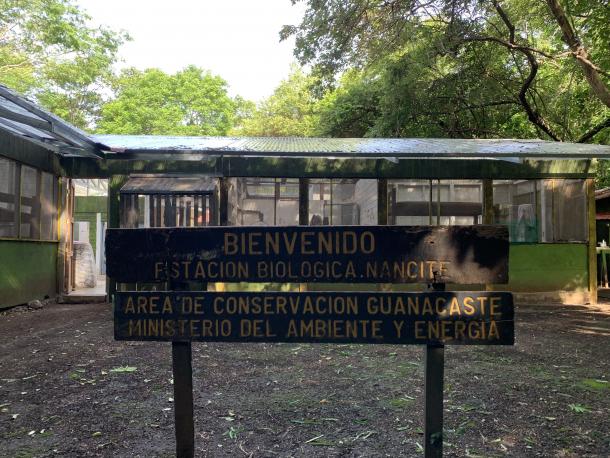
Estación Biológica Nancite, with the main building, and its new roof, in the background (photo by Monique Gilbert)
The trip to Nancite Beach is never easy. It begins with a 12-kilometer drive in a 4WD vehicle over washed-out, rutted, and challenging terrain. At the end of the road the hike begins; this 3-kilometer excursion jump-starts with a heart-thumping uphill over loose rock for one kilometer. But at the top! Views of Playa Naranjo and, if you're lucky, a cooling breeze. The next two kilometers wind downhill on a narrow trail, scrambling over rocks with little shade, until... you make it into the jungle, where the terrain is flat, shady, and you begin to smell the breeze off the ocean and hear the surf. Finally, you emerge into a clearing and Estación Biológica Nancite is before you.
NOW imagine you are doing that whole hike with a steel beam on your shoulder. Or carrying roofing material. Or lumber to build a new door. Then imagine making 7-8 trips per day. THAT is how materials to repair the station were delivered to the worksite, along with a Zodiak rubber boat to bring a 200-pound electric generator necessary for soldering metal roof beams.
We are thankful to the volunteers, and the ACG fire crew, who helped deliver materials to the station and made the repairs, and to turtle biologist Luis Fonseca, for coordinating all of the work.
And we are extremely thankful to all who donated via the crowdfunding platform GlobalGiving Foundation last September, as that support made all of this possible.
Last week, we were able to visit the station and experience the repairs first-hand. The new roof, doors, and structural supports are all in place and the station is once again habitable and safe. There are currently two researchers living at the station. Pablo is a research assistant to Luis Fonseca; he nightly monitors the beach for turtle and jaguar activity. Carolina is from Italy and is studying animal behavior of big cats. Having a small but regular human presence at the station and on the beach helps protect the sea turtles and other wildlife.
Several small tasks remain: the new roof is clear, so it needs rigid insulation to prevent a greenhouse effect during the day; the water system needs upgrading; and a better communications system is necessary for safety. Please contact us if you would like to help with any of these remaining tasks. Thank you!
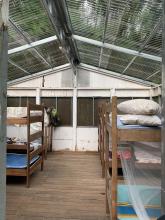
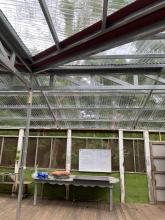
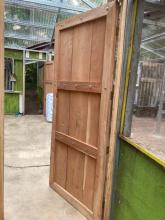
(From Left to Right) The bunkroom and the classroom (with new roof) and one of the new doors (photos by Eric Palola and Monique Gilbert)
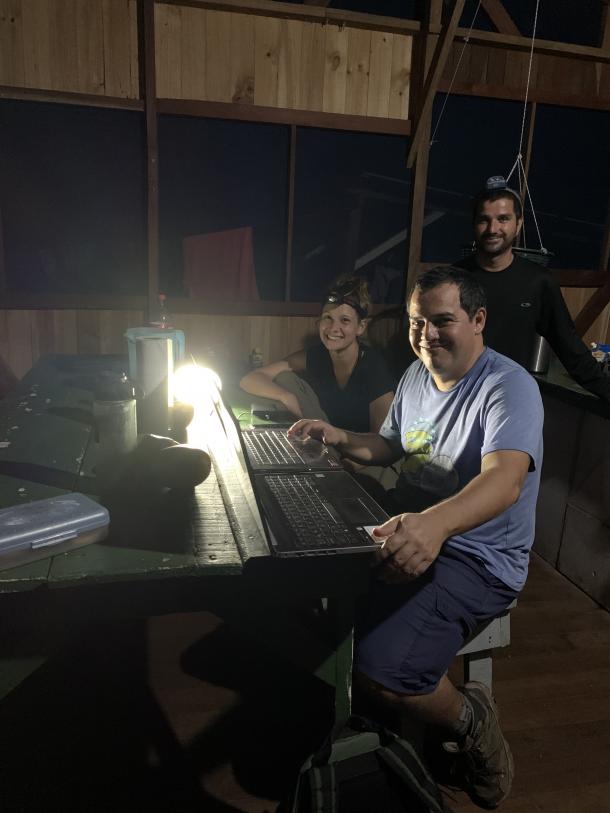
Carolina, Pablo, and Luis Fonseca entering data in the Nancite kitchen (Photo by Monique Gilbert)